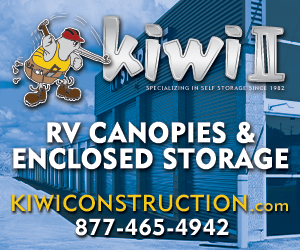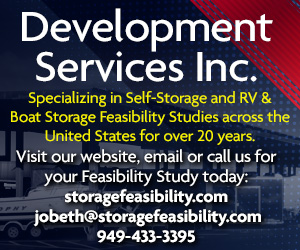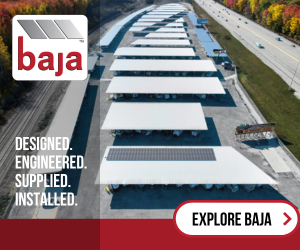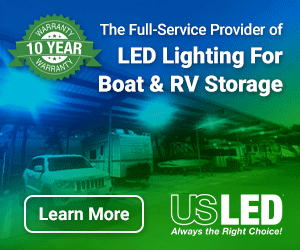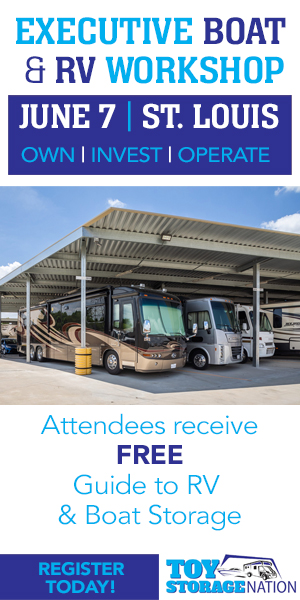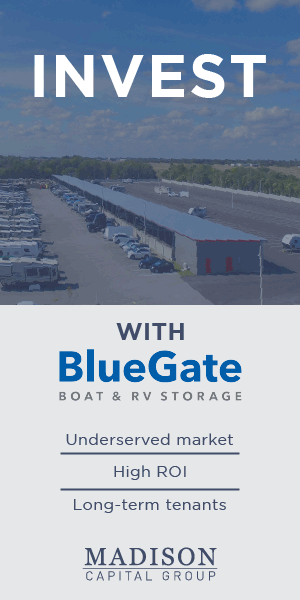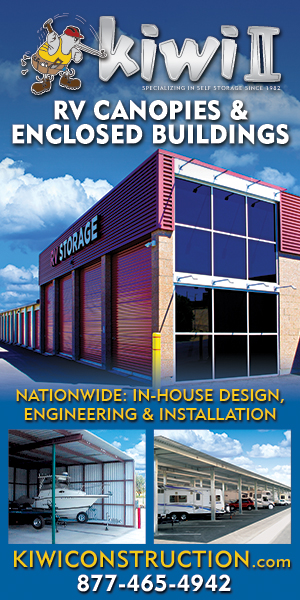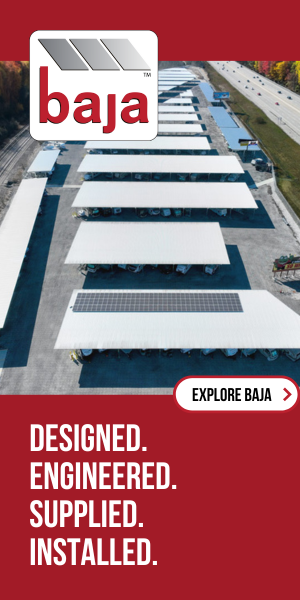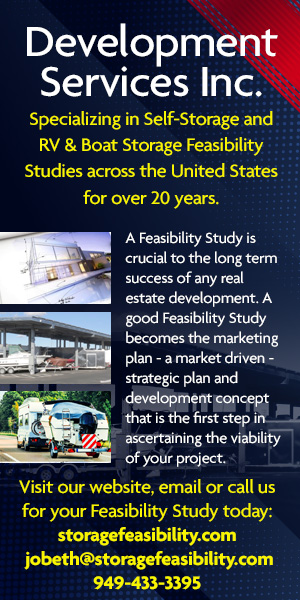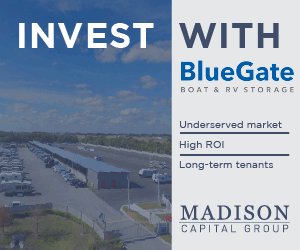Why, at one-third of the build cost, it’s one of the best performing storage investments.
Now is the time to invest in developing a luxury boat and recreational vehicle (RV) storage facility, according to Robert “Bob” Hayworth, CEO & Founder of Baja Construction. “If you’re on the fence about starting a new business venture in storage, and you’re looking for the next big thing — this is it. We’re standing at the foot of the wave for RV and boat storage.”
With over 30 years of experience in building and developing carports and luxury toy storage ports and facilities, Bob has nearly seen and tried it all. A renowned industry expert, Bob also sits on the advisory board for Toy Storage Nation, a recreational vehicle storage industry media outlet, where he is active in presentations and lectures across the country on the topic of developing RV and boat storage.
Bob was involved in his first RV carport project in Los Angeles back in 1990. From there, he began to invest in and develop his own RV and boat storage facilities across California and Nevada.
Although Bob had a slight advantage in the development realm of these storage facilities, because of his experience in designing and building them, he certainly faced his own trials and errors once he started developing storage properties as a business.
This article will discuss:
- Why the ideal time is NOW for developing RV and boat storage properties
- Why owning an equity class facility is the next step in the evolution of storage facility investments
- Step by step advice on developing RV and boat storage property

The surge of RV sales
Many aspects of the pandemic were “unprecedented,” including the explosion of RV sales. Boats, pools, and several other types of outdoor recreation also skyrocketed in 2020 after initial lockdowns.
RV ownership is currently at a record high with 11.2 million households owning an RV in 2021, up 62% from 6.9 million households in 2001 and 26% more than 8.9 million RV-owning households in 2011, according to Go RVing.
Despite inflation driving up costs, and longer lead times due to labor shortages, Americans are still purchasing these luxury toys. One reason is that it allows consumers the freedom of travel on their terms. It’s much less stressful than navigating an airport on a dictated schedule, for example. Most of Bob’s RV storage clients are retirees for whom owning a boat or an RV is fulfilling a lifelong dream. For some, especially in light of the pandemic, traveling in an RV might feel safer than flying, using public transportation, or lodging at hotels. It allows travelers to have a vacation and new experiences while avoiding crowded indoor settings.
Also, it’s not only retirees who are purchasing boats and RVs. The demographics are changing as more Millenials and Gen-Zers are taking life on the road. RVs are now commonly being used as mobile offices, or as a way for young families to travel with their children while school is operating remotely.
This massive surge of RV and boat purchases leads consumers to figure out where to store them, which is why Bob Hayworth urges potential storage investors to act now.

The benefits of RV and boat storage
“This is the best business I’ve been in, and I’ve been in several. I believe that RV and boat storage is the new equity class. We are currently in a paradigm shift between RV and mini-storage. The return on investment is greater in RV storage, and we are building them at one-third of the cost of mini-storage facilities,” says Bob.
There are many benefits of owning an equity class RV and boat storage facility, including:
- The return on investment. Mini-storage requires a lot of steel material, which is at an all-time high cost right now. RV and boat storage doesn’t require as much structure. Also, RV and boat storage only requires about half the overhead of other storage facilities.
- Lower liability. Most of the structures of these storage sites are tall, open canopies, so it’s basic compared to enclosed storage facilities. Tenants are responsible for insuring their own vehicles and trailers. Bob’s insurance premiums are less expensive than other businesses because the liability of an RV storage business is lower.
- The difference in clientele. People who are storing their boats, RVs, and trailers are invested in their toys, and they are more inclined to pay premiums to properly maintain them. Over the last 13 years of owning RV storage facilities, Bob has never had a client miss a payment.
- Happier clients. The clients utilizing RV and boat storage are happy when they arrive at the facility. For many of Bob’s clients, owning a luxury toy is fulfilling a lifelong dream. They genuinely enjoy their time at the storage facility as they’re prepping for a new travel experience on their own terms.
- It practically markets itself. Because RV and boat storage is in such high demand, Bob estimates that once half of the spaces are rented, the other half will be rented within months or even weeks just by word of mouth from happy customers.
- Renewable energy income. RV and boat storage facilities are ideal for solar power installations that not only benefit the environment but can also provide profit if sold back to the local utility company. One of Bob’s facilities generates enough power for 600 homes within the community.
- No franchised facilities. Yet. In mini-storage, when franchise giants such as Uhaul or Public Storage open up next to locally-owned business storage centers, it immediately drives profits down. There are no nationally-owned RV and boat storage companies yet, which makes the investment even more attractive to banks right now.
The RV industry is currently shipping more vehicles than ever. As of November 2021, RV sales in the US hit record numbers at nearly 560,000 vehicles sold. 2021 wholesale shipments were expected to be 40% higher than in 2020, and 19% higher than the last record high set in 2017, according to an RV Industry Association analysis.
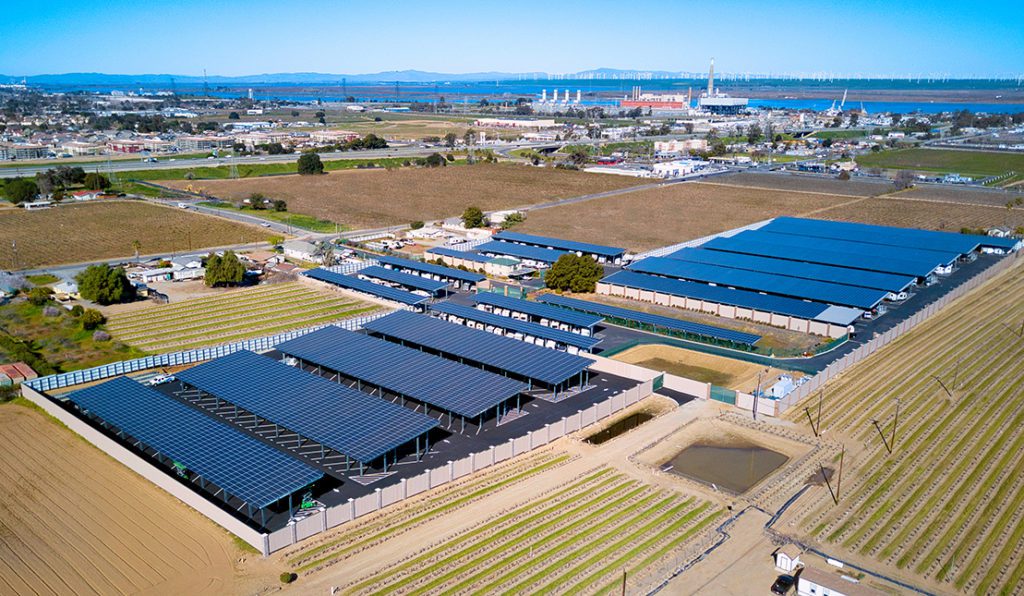
Developing “Class A” RV and boat storage
First, it’s important to understand that Bob specializes in, and recommends investing in, Class A or luxury storage facilities. His facilities are designed to feel like clients are in a luxury automobile service lounge. Design features, security, and amenities will go a long way in attracting long-term customers who pay for premium service. Bob also notes that these kinds of storage facilities have the potential for waitlists for years to come.
“There are options, of course. Customers can rent a cheap parking space in a place that has cyclone fencing and a gravel surface and is secured by razor wire and a padlock. What I’ve found though is that clients who invest in these recreational vehicles are smart with their money, and know they get what they pay for. That’s why it’s worth it to them to pay a little more for things that protect their investments like covered parking, paved surfaces, modern security systems, and amenities that keep them coming back,” said Bob.
Here are some of the features Bob suggests in planning for a premium storage facility:
- 24/7 surveillance and security
- Covered parking canopies with angled spaces for easy in and out
- Asphalt paving
- Charging outlets
- Free water and dump station
- Free ice and air
- Propane available for sale
- Restrooms and showers inside of the facility
- WiFi and conference rooms
- Lobby area with sofas, free coffee, water, TVs
When Bob began developing his own RV and boat storage properties, he learned invaluable lessons through the process (and continues to do so!). Here are his recommendations for investors looking to get started in this high-demand venture.
Where to build
One of the first things to consider when developing an RV and boat storage facility is finding the right piece of land. This is a lesson Bob learned the hard way when he decided to purchase his first property near Oakley, California. When he purchased the land, it didn’t come with access to major utilities such as water, gas, drainage, and sewer.
Luckily, he was able to turn these challenges around by suggesting installing solar panels on the canopies. At the time, this was a major incentive for the city, and as Bob described: “The solar panels were like Moses parting the Red Sea. After that conversation, the city did everything they could to help me gain access to all of the utilities I needed.”
However, not all cities have the same incentives or politics. In general, these are the criteria Bob suggests to consider before purchasing property:
- Zoning. Understand what the land is zoned for. Look for parcels that are zoned for light industrial, or any zoning designation that allows for outdoor vehicle storage.
- Growth. Select an area of growth or demographic expansion.
- Visibility. The property should be visible from a major thoroughfare with easy access for a large vehicle to maneuver.
- Location, location, location. RV and boat storage within major metropolitan areas isn’t the best location. Most people driving these RVs and trailers aren’t comfortable maneuvering them in city traffic or in tight spaces. Look for land further away from the city and is ideally located between where clients live and play. Also, land is typically cheaper in these outskirt areas.
- Size. These are large vehicles that not only need plenty of covered parking space but lots of room to maneuver. Look for at least three acres and up to 30 acres (or more) at a price of $2 to $5 per square foot.
- Access to utilities. The must-haves: water, electricity, sewer or septic, drainage (plan for 1-2 acres).
City planning
When working with city planners, keep the benefits for them at the forefront of discussions to help move the process forward. How can an RV and boat storage facility benefit the city? For starters, it gets these large vehicles off the city streets. Many people purchase these vehicles and think they can just park them in front of their houses, not realizing they’re an eyesore or inconvenience for neighbors. Also, if these vehicles are leaking any fluids, they typically end up in the city’s water system which negatively impacts its citizens.
RV and boat storage facilities should have drainage systems with detention ponds to properly contain these fluids onsite without negatively impacting the city’s water system.
Providing covered canopies for RVs is critical for maintaining the vehicle for many reasons, including protecting the investment for the client. It’s also better for the environment. When vehicles are left sitting uncovered in the sun, it takes them much longer to cool down, which means the engine usually idles longer and pumps out exhaust. And, the roof could potentially degrade from just two years of uncovered parking. Not only does this cost the owner between $6,000 and $10,000 to replace, but it’s made from plastic which isn’t environmentally friendly to reproduce.
It’s also helpful to provide city planners with some images and visuals for context. For example, coming prepared with high-level site plans, along with photos of existing premium RV and boat storage facilities (Oakley Executive, for example) can help paint the picture for other people and get them on board.
If alternative energy is a critical incentive for the city, be sure to include these plans in the conversation by explaining how solar panels at this site can help bring renewable energy efforts to the city.
In most cities, it’s possible to circumvent the planning committee process which can add more time to the project. Check to see if it’s possible to have a planning meeting, which usually costs a couple of thousand dollars but is worth it to cut to the chase.
The RV and boat storage development team
Now that the city is on board with the project plans, it’s time to hire the team involved in planning. The necessary experts include an architect, a civil engineer, a landscape architect, a surveyor, and possibly, a soil engineer.
Depending on the project, Bob estimates it will cost between $50,000—$200,000 to design the project and provide the proper documentation to bring to the planning commission. Typically, once the planning commission approves the plans, it moves forward to the city council.
Bids and plans, and entitlements
Once the project is approved by the city council, it’s time for the architects and engineers to help compile bid documents and plans necessary in securing funding for the project, and for hiring the right general contractor and builders.
If the project includes solar panels, Bob recommends applying for an SBA 504 loan because the project owner is only responsible for 15% upfront. The other benefit of this loan is that there is no limit on the number of loans, which may be helpful in the situation of planning multiple new building sites.
The entitlement phase is the process of obtaining the proper permits, which can take several months if not one year. Loans are not given until permits are in place.
Building the RV and boat storage facility
Once the permits are in place and the loans are secured, it’s time to start building. For a 15-acre facility, Bob estimates the build phase to last between 9-12 months.
Hiring a company such as Baja Carports is beneficial to the build timeline because of their proven pre-fab system. The materials are shipped directly to the construction site to avoid waiting in a yard. Since the materials are pre-fab, the building process is typically more efficient than having to cut and assemble materials onsite.
Cost-wise, building RV storage is currently one-third of building a mini-storage facility. Bob’s build projects have been costing around $50 per square foot, compared to $150 per square foot for mini-storage — mainly because of the amount of steel involved in building enclosed storage facilities.
Managing the RV and boat storage facility
Now that the facility is built, it’s time to open it and manage it. Bob explains why owning and operating an RV and boat storage is one of the easiest and most fun business ventures he’s ever had.
The first thing to do is to implement a technology system that provides codes to tenants for in and out access, and handles accounting, as they are tied together.
Then, hire help. Bob employs two part-time workers at his Oakley Executive site. This brings up another benefit to owning this kind of storage facility — overhead is 20%, while overhead for mini-storage facilities is typically around 40%.
Marketing the new business and getting the word out is important. Depending on the target demographics, TV ads for one year may be a great avenue for advertising. Building a simple website will also help with Google searches.
Bob is quick to point out that because of the high demand for premium storage sites, once clients start rolling in, the business practically markets itself. Bob’s experience has been that once his site was half-rented, the other half was rented within months, if not weeks, all from word-of-mouth by happy customers. His waitlist is typically around 60 people, which is why he never has an empty spot.
Conclusion
With the boom of RV and boat purchases, and no signs of it slowing down, NOW is the time to invest in equity-class storage solutions for these luxury toys. Customers who are investing in their dreams, in their bucket list, and in the happiness that comes from freedom of travel are willing to pay for premium storage to maintain their assets.
Bob’s final piece of advice to readers is to remain flexible in this business. There will always be unknown challenges that pop up during the project in development. Remain flexible and agile, because the return on investment once the business is up and running is definitely worth it.
“The willow bends, but doesn’t break,” says Bob.









